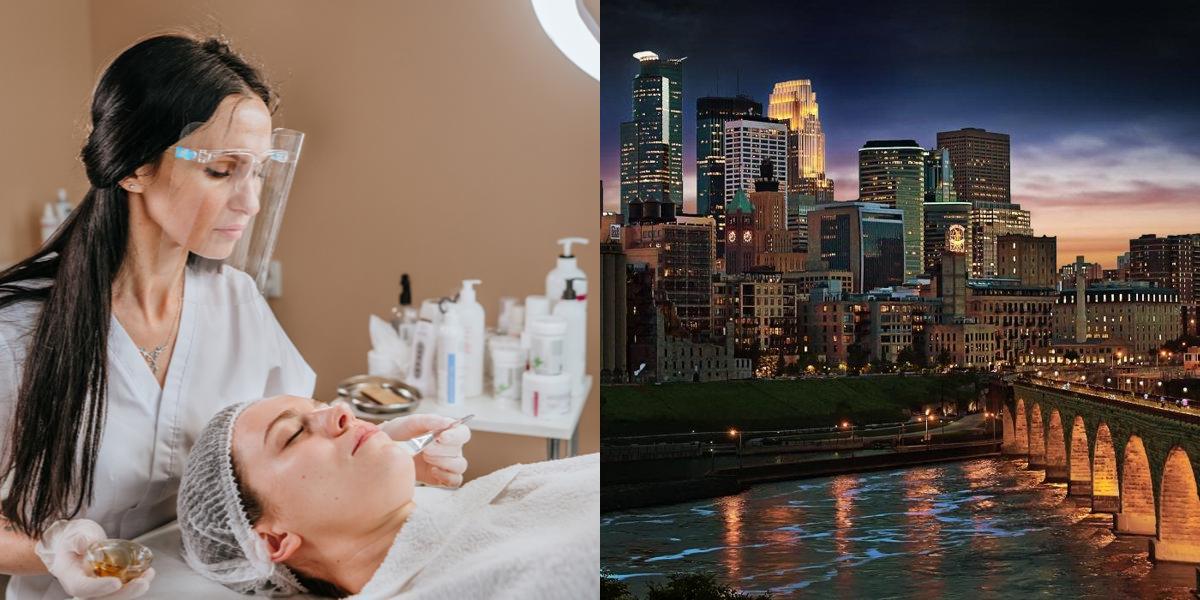How to Become an Esthetician in Minnesota

Are you interested in pursuing a career in the beauty industry? Becoming an esthetician might be the perfect path for you. In this blog post, we will explore what estheticians do, where they work, the requirements to become an esthetician in Minnesota, and where you can find esthetician classes in the state.
How do I get my Esthetician certification?
If you have a passion for skincare and beauty, becoming an esthetician could be the perfect career choice for you. Estheticians are licensed professionals who provide a range of skincare services, including facials, waxing, and makeup application. To become a certified esthetician, you will need to follow a few steps:
-
Research the requirements in your state: Each state has its own set of requirements for esthetician certification. Start by researching the specific requirements in your state to ensure you understand the steps you need to take.
-
Complete an approved esthetician program: Most states require aspiring estheticians to complete a state-approved esthetician program. These programs are typically offered by vocational schools, community colleges, and private esthetics schools. The programs usually range from 600 to 1,200 hours of training, depending on the state's requirements. During the program, you will learn about skincare techniques, product knowledge, and salon management.
-
Pass the written and practical exams: Once you have completed your esthetician program, you will need to pass both a written and practical exam to obtain your esthetician license. The written exam typically covers topics such as skincare theory, sanitation practices, and state laws and regulations. The practical exam assesses your hands-on skills, such as performing a facial or waxing treatment.
-
Apply for your esthetician license: After successfully passing the exams, you can apply for your esthetician license through your state's licensing board. You will need to submit an application, along with any required documentation, such as proof of completion of an approved esthetician program and exam scores. There is usually a fee associated with the license application.
-
Continuing education: Once you have obtained your esthetician license, it is important to stay up-to-date with the latest trends and techniques in the industry. Many states require estheticians to complete a certain number of hours of continuing education courses every few years to maintain their license.
How do I get a job as an Esthetician?
Getting a job as an esthetician involves a combination of networking, applying for positions, and showcasing your skills and knowledge. Here are some steps to help you kickstart your career as an esthetician:
-
Build your professional network: Networking is crucial in any industry, and esthetics is no exception. Connect with other estheticians, salon owners, and industry professionals through social media platforms like LinkedIn and Instagram. Attend industry events, conferences, and workshops to meet people who can help you in your job search.
-
Craft a professional resume: Your resume should highlight your education, skills, and any relevant experience you have. Include details about your esthetician program, the number of hours you completed, and any specialized training you received. Be sure to showcase any certifications or additional qualifications you have obtained.
-
Apply for jobs: Look for job openings at spas, salons, wellness centers, and even skincare product companies. Many establishments advertise job openings on their websites or through job search platforms. Tailor your application to each specific position, highlighting how your skills and experience align with the job requirements.
-
Prepare for interviews: Before an interview, research the company you are applying to and familiarize yourself with their services and clientele. Practice common interview questions and prepare anecdotes that showcase your skills and experience. Dress professionally and arrive on time for the interview.
-
Showcase your skills: During the interview process, be prepared to demonstrate your skills and knowledge. This could involve performing a mini facial, discussing skincare concerns with the interviewer, or providing recommendations for a skincare routine. Showcasing your expertise will help potential employers see the value you can bring to their establishment.
-
Consider an apprenticeship or internship: If you are having difficulty finding a job right away, consider reaching out to local salons or spas to inquire about apprenticeship or internship opportunities. These positions can provide valuable hands-on experience and may lead to a full-time job in the future.
Remember, building a successful career as an esthetician takes time and dedication. Be patient and persistent in your job search, and continue to improve your skills through ongoing education and training.
Career Paths and Opportunities after Becoming an Esthetician
Becoming an esthetician opens up a world of career opportunities. Here are some common career paths and opportunities you can explore after obtaining your esthetician certification:
-
Spa or salon esthetician: Many estheticians choose to work in spas or salons, providing a range of skincare services to clients. As a spa or salon esthetician, you may perform facials, body treatments, waxing, and other skincare services. You may also have the opportunity to sell skincare products to clients.
-
Medical esthetician: Medical estheticians work under the supervision of physicians or other healthcare professionals to provide skincare treatments that are more medical in nature. This could include microdermabrasion, chemical peels, laser treatments, and assisting with pre- and post-operative skincare for cosmetic procedures. Additional training and certifications may be required for this career path.
-
Skincare specialist for a cosmetic company: Skincare companies often employ estheticians as skincare specialists to educate customers about their products and provide personalized skincare consultations. In this role, you may work in a retail setting, conducting skincare demonstrations and recommending products based on individual needs.
-
Makeup artist: Many estheticians have a passion for makeup artistry and pursue careers as makeup artists. As a makeup artist, you may work in a salon, spa, or freelance, providing makeup application services for weddings, special events, or photoshoots.
-
Entrepreneurship: Some estheticians choose to start their own businesses and become self-employed. This could involve opening your own spa or salon, offering mobile esthetician services, or creating your own skincare line. Running your own business requires additional skills and knowledge in marketing, finance, and customer service.
-
Education and training: If you have a passion for teaching, you may consider a career in education and training. Many estheticians go on to become instructors at esthetician schools or work as trainers for skincare product companies.
Remember, these are just a few examples of the career paths and opportunities available to estheticians. The beauty industry is constantly evolving, and new opportunities may arise as trends change and new technologies are developed. Stay curious, continue learning, and be open to exploring different paths as you grow in your career.
Final Thoughts
Becoming a certified esthetician can open the door to a rewarding and fulfilling career in the skincare and beauty industry. By following the steps to obtain your esthetician certification, networking, and showcasing your skills, you can increase your chances of securing a job in the field. From there, you can explore various career paths and opportunities, whether it's working in a spa, pursuing medical esthetics, becoming a makeup artist, or even starting your own business. With dedication, ongoing education, and a passion for skincare, the possibilities are endless in the world of esthetics.
If you're thinking of a new career path, Dreambound offers in-depth guides to understand various job choices:

Winlynd Caballero is a member of Dreambound's Sales team. She helps in handling the company's finullcial transactions, generating reports, and school sales. Beyond her responsibilities in the realm of numbers and business, Winlynd finds herself deeply immersed in a world of art and music.




